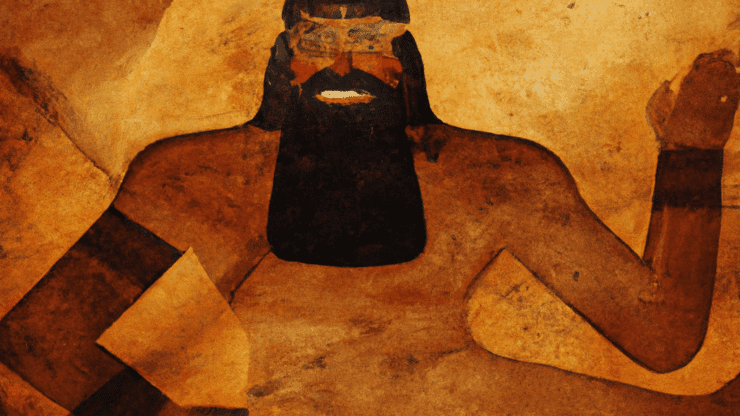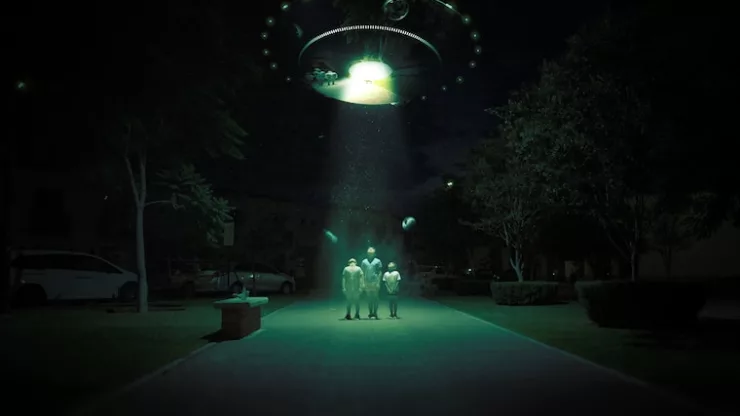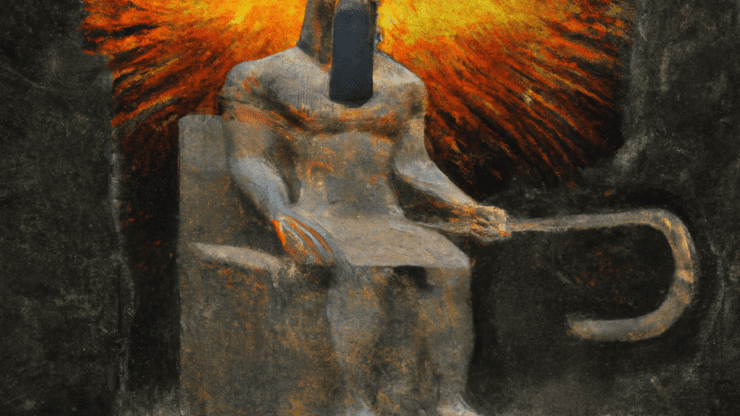The concept of the Anunnaki has fascinated historians, archaeologists, and conspiracy theorists for decades. From their mysterious origins to their supposed interventions in human history, the Anunnaki have been the center of numerous debates and discussions.
In this article, we aim to separate fact from fiction, delve into the historical and mythological references, and explore the Anunnaki’s influence on popular culture.
Jump to Section
Introduction
The Anunnaki are perhaps the most mysterious and enigmatic beings in ancient mythology. They have been the subject of countless conspiracy theories, and their supposed relationship with humans has been the topic of many debates.
The term “Anunnaki” is derived from the Sumerian language and refers to a group of deities or gods who were believed to have lived on Earth long before the emergence of human civilization.
In recent years, conspiracy theorists, ancient astronaut theorists, and even some mainstream historians have linked the Anunnaki to a range of supposed events in human history, including the creation of the human race, the construction of ancient monuments, and the intervention in human affairs.
Who are the Anunnaki?
Historical background
The Anunnaki were first mentioned in the Sumerian texts, which date back to around 4500 BCE. The Sumerians were one of the first civilizations in Mesopotamia and are considered to be the cradle of civilization.
The Anunnaki were described as powerful beings who could control the elements, and who had the ability to shape-shift and take on human form.
Mythological references
The Anunnaki appear in several different mythologies, including the Babylonian, Assyrian, and Akkadian myths.
In all of these myths, the Anunnaki were seen as powerful deities who had control over various aspects of nature, including the weather, the sea, and the land.
Evidence of their existence
Despite the lack of archaeological evidence supporting their existence, many conspiracy theorists and ancient astronaut theorists have pointed to various ancient texts and artifacts as proof of the Anunnaki’s existence.
Some have even pointed to the existence of ancient monuments such as the pyramids as evidence of the Anunnaki’s involvement in human history.
Physiological Characteristics of the Anunnaki
| Characteristic | Description |
|---|---|
| Height | Taller than humans |
| Skin color | Light-colored skin |
| Hair | Long hair |
| Eyes | Large, almond-shaped eyes |
| Clothing | Wore clothing made of a special fabric |
Anunnaki in Sumerian Texts
Creation myths involving the Anunnaki
The Sumerian texts describe the Anunnaki as the creators of the universe and the builders of the first civilization on Earth.
According to these myths, the Anunnaki were responsible for the creation of humans, and they were seen as the protectors of humanity.
Gods and goddesses associated with the Anunnaki
In Sumerian mythology, the Anunnaki were associated with various gods and goddesses, including Enki, Enlil, Inanna, and Nanna.
Each of these deities had a different role to play in Sumerian culture, and they were all believed to be under the control of the Anunnaki.
Relationship between the Anunnaki and humans
The Sumerian texts describe the Anunnaki as being very interested in human beings and their activities.
They were said to have helped humanity in various ways, including teaching them how to farm and how to build cities.
However, they were also feared by humans and were believed to have the power to punish those who disobeyed them.
The Anunnaki and Ancient Astronaut Theory
Introduction to the Ancient Astronaut Theory
The Ancient Astronaut Theory is a hypothesis that suggests that extraterrestrial beings visited Earth in ancient times and played a role in shaping human civilization.
This theory has gained considerable popularity in recent years, and many have suggested that the Anunnaki were the extraterrestrial beings who visited Earth.
Evidence supporting the theory
Proponents of the Ancient Astronaut Theory have pointed to various pieces of evidence to support their claims, including ancient texts, artwork, and archaeological discoveries.
They have also pointed to the similarities between various ancient monuments and structures as proof that they were built by the same extraterrestrial race.
Debunking common misconceptions
Despite its popularity, the Ancient Astronaut Theory has been widely criticized by mainstream historians and archaeologists, who have pointed to various flaws in the theory.
Some of the most common criticisms include the lack of archaeological evidence supporting the theory, the reliance on unreliable sources, and the lack of scientific rigor.
The role of the Anunnaki in the theory
Despite the criticisms, many Ancient Astronaut theorists continue to link the Anunnaki to the theory.
They have pointed to various ancient texts and artifacts as proof of their existence, and they have suggested that the Anunnaki played a major role in shaping human civilization.
Separating Fact from Fiction
Evidence of the Anunnaki’s Existence
- The Sumerian texts: The most significant evidence for the existence of the Anunnaki comes from the Sumerian texts, which describe them in great detail.
- Ancient artwork: Many ancient artworks depict beings that resemble the Anunnaki, which some have suggested is evidence of their existence.
- Ancient structures: Some have pointed to the construction of ancient structures such as the pyramids as evidence of the Anunnaki’s intervention in human affairs.
Common Misconceptions
- The Anunnaki were aliens from another planet
- The Anunnaki created humans
- The Anunnaki were the only extraterrestrial race to visit Earth
Debunking Theories
- The Sumerian texts provide reliable evidence of the Anunnaki’s existence.
- The Anunnaki were not aliens from another planet, but rather powerful deities who lived on Earth.
- There is no evidence to suggest that the Anunnaki played a role in the creation of the human race.
The Anunnaki in Pop Culture
Influence on science fiction and fantasy
The Anunnaki have had a significant influence on science fiction and fantasy, with many authors and filmmakers using them as a source of inspiration for their work.
Some of the most popular examples include the “Stargate” franchise and the “Assassin’s Creed” video game series.
The impact of popular conspiracy theories
The Anunnaki have also been the subject of numerous conspiracy theories, with some suggesting that they were responsible for various historical events such as the construction of the pyramids and the creation of the human race.
These theories have gained considerable popularity in recent years, with many people believing in their validity.
The Anunnaki in contemporary art
The Anunnaki have also been the subject of numerous works of contemporary art, with many artists using them as a source of inspiration for their work.
Some of the most popular examples include the works of H.R. Giger and Alejandro Jodorowsky.
Conclusion
In conclusion, the Anunnaki are a fascinating and enigmatic topic that has captured the imagination of historians, archaeologists, and conspiracy theorists for decades.
While there is little archaeological evidence to support their existence, there are numerous ancient texts and artifacts that describe them in great detail.
Despite the controversies surrounding their existence, the Anunnaki have had a significant impact on popular culture, with many works of science fiction and fantasy using them as a source of inspiration.
Frequently Asked Questions
What is the Ancient Astronaut Theory?
The Ancient Astronaut Theory is a hypothesis that suggests that extraterrestrial beings visited Earth in ancient times and played a role in shaping human civilization.
Who were the Anunnaki?
The Anunnaki were a group of deities or gods who were believed to have lived
Greetings fellow space travelers, I am Draco Blaze, creator of Alienated Media who is passionate about exploring the unknown and writing about my experiences with extraterrestrial life.
My focus is on alien encounters and creating thought-provoking sci-fi short stories that transport readers to new worlds and realities.
Feel free to contact me at [email protected].





